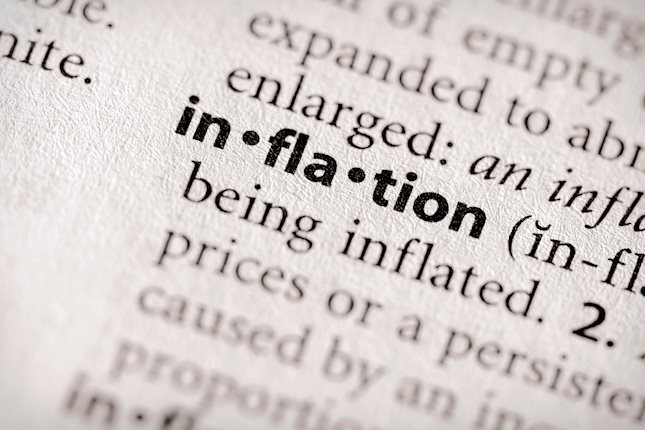The pound and gilts have found some respite after a substantial – albeit orderly – selloff. The UK Treasury’s pledge to stick to fiscal rules means more potential pain for sterling down the road, but it should allow some stabilisation in the short term. Elsewhere, we see upside risks for the dollar on the back of robust payrolls.
USD: Payrolls should keep Fed cautious
The December US jobs report is released today and consensus is for a 138k payroll print and unchanged 4.2% unemployment rate. Our economics team also expects 4.2%, but is flagging room for a surprise on the strong side. Our house projection is 160k.
We think the balance of risks is tilted to the upside for the dollar today, as robust jobs figures could prompt markets to price out a March cut and potentially push the first fully-priced move beyond June. We would still argue that with inflation concerns back on the rise – although the Fedspeak has been quite heterogeneous on that topic – next Wednesday’s CPI report could have deeper market ramifications.
In the event of a (moderate) disappointment in today’s job figures, the dollar should take a positioning-readjustment hit, but dollar longs may simply be rebuilt at better levels ahead of key upcoming data releases and Trump’s inauguration on 20 January.
Employment data for December is also released in Canada today, where expectations are for a slowdown in hiring to 25k and another tick-up in unemployment to 6.9%. The impact on CAD would likely be short-lived as the currency is almost entirely trading on the back of the perceived risk of a US-Canada trade war, and how that can be impacted by the new prime minister. At this stage, consensus seems to be building around two candidates: former Finance Minister Chrystia Freeland and former Bank of Canada/Bank of England Governor Mark Carney. The latter would – in our view – be better received by markets as Freeland has been on contentious terms with Trump.
EUR: Lots of negatives in the price
EUR/USD undervaluation has once again exceeded 2.5%, as FX and short-term rates dynamics have continued to diverge. When the EUR:USD two-year swap rate gap was last at the current -175bp (November), EUR/USD was trading around 1.05.
This tells us that markets are pricing a good deal of negatives into the euro at this stage, and perhaps the euro may be penalised less than other G10 currencies should US payrolls come in strong today. EUR/USD can find decent support at 1.0250 or at the 2 January low of 1.022.
One positive development for the euro has been the correction in TTF gas prices, now at 45 EUR/Mwh after having touched 50 EUR at the start of January. Markets have seemingly been reassured by forecasts of milder weather in Europe and robust LNG supply from the US. There is also some ongoing discussion within the EU – championed by Slovakia - to potentially reactivate the Ukraine gas pipeline.
GBP: UK Treasury eases market nerves
The 10-year gilt stabilised around 4.80% yesterday, which has allowed the pound to partially recover after hitting a 1.224 low yesterday morning. What has helped calm market nerves was a comment by a top UK Treasury official who claimed “meeting the fiscal rules is non-negotiable”. In practice, this means that since the rise in yields has eroded the fiscal headroom, Chancellor Rachel Reeves is more likely to deliver some fiscal consolidation should the updated OBR forecasts (released 26 March) show the government is not on track to meet the fiscal rule. That consolidation means higher taxes or lower spending – with the latter generally deemed more likely at this stage.
The market seems to be acknowledging the Treasury’s reiterated fiscal pledges and this has prevented the gilt and pound selloffs from becoming disorderly. As discussed in this note, this is not a sovereign crisis, and the rise in yields is – so far – justified.
This suggests we can expect some short-term respite for the pound. In the coming months, we expect fresh pressure on GBP on the back of much larger easing by the Bank of England compared to pricing; which may coincide with the fiscal tightening mentioned above. Today, the US leg could add some extra pressure on GBP/USD, but if gilts have another quiet session, the pair should attract buyers in the 1.225-1.230 area.
CEE: Relationship decoupling
The end of the week, as in the previous days, does not have much to offer in the CEE region calendar. This morning saw the release of retail sales and final 3Q GDP numbers in Romania. Otherwise, we won't see much else today. Attention turns to the global story with US labour market numbers. Yesterday CEE FX showed a remarkable turnaround from weakness in the morning to further gains in the afternoon.
More interesting in our view is the decoupling of some market relationships, particularly rates and FX, which have been very strong in the region in recent weeks. In particular, we saw a strong divergence in Poland's zloty and the Czech koruna yesterday and both currencies seem too strong to us. Of course, today the US market will lead the market. For the zloty, next week's central bank meeting may provide further downside support for EUR/PLN. Also, as the pair remains within our preferred range of 4.260-4.280, we don't see strong reasons to take a contrary position. In the case of EUR/CZK we see more of an upside bias and any levels closer to 25.00 may be interesting for the market to go short CZK ahead of inflation numbers and some Czech National Bank headlines next week given the hawkish market pricing.
Read the original analysis: FX daily: Fiscal rigor pledge is calming Sterling market
Content disclaimer: This publication has been prepared by ING solely for information purposes irrespective of a particular user's means, financial situation or investment objectives. The information does not constitute investment recommendation, and nor is it investment, legal or tax advice or an offer or solicitation to purchase or sell any financial instrument. Read more here: https://think.ing.com/content-disclaimer/
Recommended Content
Editors’ Picks

EUR/USD trades deep in red below 1.0300 after strong US jobs report
EUR/USD stays under bearish pressure and trades below 1.0300 in the American session on Friday. The US Dollar benefits from the upbeat jobs report, which showed an increase of 256,000 in Nonfarm Payrolls, and forces the pair to stay on the back foot heading into the weekend.

GBP/USD drops toward 1.2200 on broad USD demand
GBP/USD extends its weekly slide and trades at its weakest level since November 2023 below 1.2250. The data from the US showed that Nonfarm Payrolls rose by 256,000 in December, fuelling a US Dollar rally and weighing on the pair.

Gold ignores upbeat US data, trades above $2,680
Following a drop toward $2,660 with the immediate reaction to strong US employment data for December, Gold regained its traction and climbed above $2,680. The risk-averse market atmosphere seems to be supporting XAU/USD despite renewed USD strength.

Sui bulls eyes for a new all-time high of $6.35
Sui price recovers most of its weekly losses and trades around $5.06 at the time of writing on Friday. On-chain metrics hint at a rally ahead as SUI’s long-to-short ratio reaches the highest level in over a month, and open interest is also rising.

Think ahead: Mixed inflation data
Core CPI data from the US next week could ease concerns about prolonged elevated inflation while in Central and Eastern Europe, inflation readings look set to remain high.

Best Forex Brokers with Low Spreads
VERIFIED Low spreads are crucial for reducing trading costs. Explore top Forex brokers offering competitive spreads and high leverage. Compare options for EUR/USD, GBP/USD, USD/JPY, and Gold.